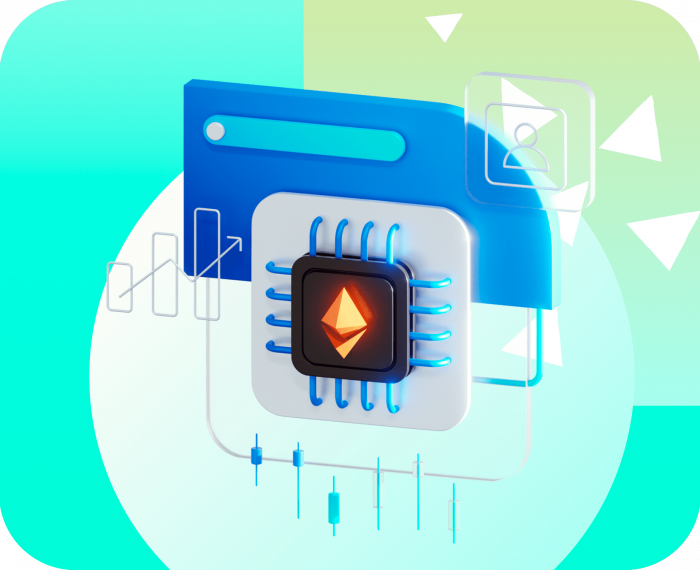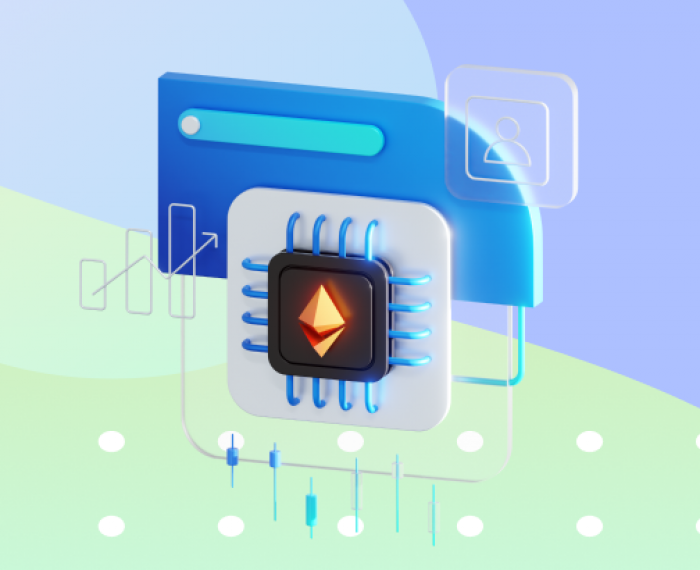
Decentralized Finance (DeFi) Guide for Beginners
Decentralized Finance (DeFi) is an ecosystem of commercial applications that are built on top of blockchain networks.
In particular, the term Decentralized Finance might relate to a movement that focuses on building open-source, permissionless, and transparent financial services. DeFi is accessible to anyone and is censorship-free. Users retain complete ownership of their assets and engage with this ecosystem thanks to peer-to-peer (P2P) and decentralized applications (apps).
The primary advantage of DeFi is an easy to access to any financial services, particularly for people who are cut off from the present economic system. What is impressive about DeFi, is the modular architecture upon which it is constructed. DeFi projects on public blockchains are interoperable and possess the capacity to enable complete financial markets, with both digital and physical goods and services.
How can we distinguish DeFi from open banking?
Open banking is a regulatory framework that obliges banks to exchange data with third-party service providers (for example, startups) upon customer request via APIs (Application Programming Interface). It allows networking between banks and non-bank financial entities and enables the introduction of new sorts of products and services. For instance, open banking may allow the administration of all traditional financial instruments in a single application by securely obtaining data from several banks and organizations.
DeFi, however, proposes an entirely new financial system that is independent of the current infrastructure. It may enable the administration of innovative financial instruments as well as novel methods of engaging with them. In fact, DeFi is sometimes mentioned as open finance.
4 Main options of using DeFi:
1. Borrowing & Lending
The most popular type of DeFi application is open lending protocols. First of all, it is instant transaction settlement, the ability to collateralize digital assets, and, on top of that, requires no credit check. Lending marketplaces on the blockchain let their users minimize counterparty risk and make borrowing much cheaper, quicker, and accessible for a greater number of people.
2. Financial Services Sector
Financial banking services are a natural use case for DeFi apps. Among examples are stablecoins, mortgages, and insurance. As the blockchain sector increases, there is a greater emphasis on the development of stablecoins. They are a type of cryptoasset that is linked to a real-world asset but can be easily moved digitally. Given the volatility of cryptocurrency values, decentralized stablecoins might be accepted for everyday usage as digital cash that is neither issued nor regulated by a central body.
The process of obtaining a mortgage is costly and time-consuming, owing mainly to the number of intermediaries that must be involved. Underwriting and legal expenses may be considerably lowered with the usage of smart contracts. The elimination of the need for intermediaries leads to a reduction in fees while keeping the high quality of service.
3. Decentralized Marketplaces
This segment of DeFi provides the largest room for financial innovation. Decentralized exchanges (DEXes) are among key DeFi applications. Users can use these platforms to trade digital assets without requiring a trusted intermediary (a centralized exchange) to store their savings. With the aid of smart contracts, trades are conducted directly between user wallets.
4. Smart Contracts in DeFi
The majority of present and prospective applications of Decentralized Finance include developing and executing so-called smart contracts. As opposed to a traditional contract, a smart contract employs computer code to determine the parameters of the interaction between the entities who enter the contract.
Smart contracts can enforce their terms using computer code. Such a unique ability of smart contracts enables the secure execution and automation of a wide range of business activities that are presently overseen manually.
On one hand, using smart contracts saves time, makes life easier, and lowers risk for both sides. On the other hand, smart contracts create new sorts of hazards. Due to the fact that computer code is prone to flaws, the value and confidentiality of smart contracts are jeopardized.
The Pros and Cons of DeFi
Pros:
The complete control. Traditional economics relies on banks to serve as intermediaries and mediators to provide arbitration. DeFi applications, on the other hand, require no intermediaries or arbitrators. The code defines how to resolve any potential disagreement, and users retain complete control over their digital cash at all times. It lowers the costs of providing and utilizing these products, allowing for a more easy-to-use financial system.
Security. Single points of failure (SPOF) are rectified as these new financial services are deployed on top of blockchains. Because the data is recorded on the blockchain and distributed across hundreds of nodes, censorship or shut down of the service is highly unlikely. Moreover, developers can build the frameworks for DeFi applications in advance, which means that deploying one becomes much less complicated and more secure.
Accessibility. Such an open ecosystem has another important benefit which is the ease of access for those who were unable to obtain financial services previously. Since the existing financial system is based on intermediaries generating a profit, its services are generally unavailable in low-income areas. On the contrary, the expenses in DeFi are considerably lowered, and those on low incomes may now freely participate in a wider range of financial services.
Cons:
Low efficiency. Public blockchains are intrinsically slower than their centralized equivalents, and this is reflected in the apps created on top of them.
Higher risk of user failures. DeFi apps shift responsibilities away from intermediaries and toward the user. It can have negative consequences for many people. When products are implemented on top of immutable blockchains, designing solutions that reduce the risk of user error becomes an especially challenging task.
Poor user experience. At present, using DeFi apps necessitates extra effort on the user side. DeFi apps must provide a definite advantage that incentivizes users to migrate from the old system to become a key component of the global financial system.
Oversaturated ecosystem. Finding the application that is most suited for a given use case could be complex, and users need to be educated on making the best choices.
Summary
Decentralized Finance is aimed at building financial services segregated from the traditional economic or political system, which would allow for a more inclusive financial system. However, there is a significant shortcoming as not everyone will benefit from decentralization.
If the system of DeFi is successful, it will capture big centralized companies and place them in the hands of the open-source community. Whether this will result in a more efficient financial system will be determined when DeFi is ready for widespread use.



